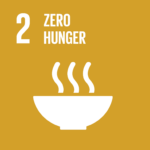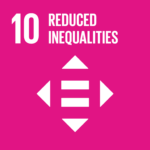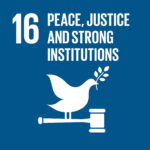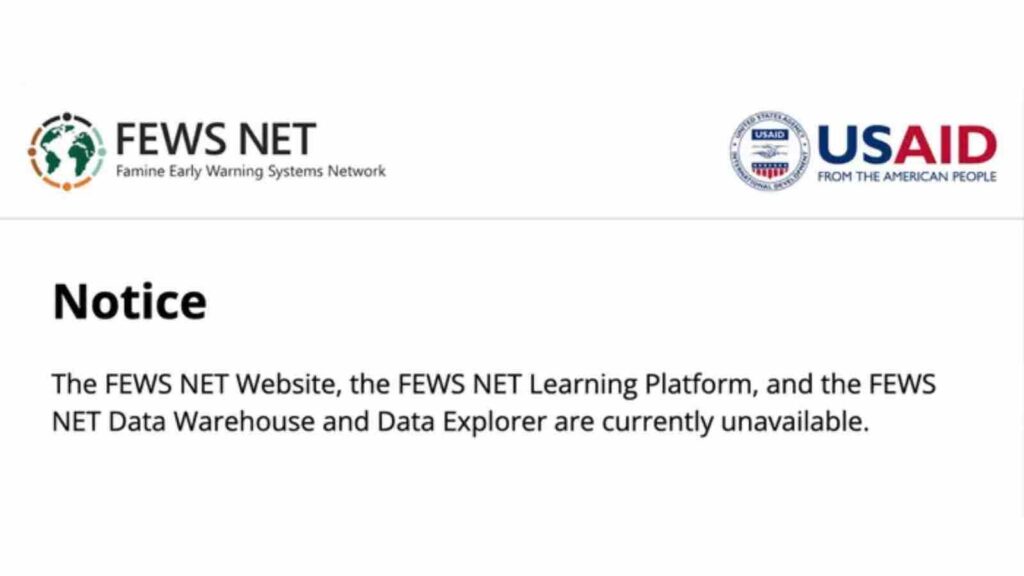USAID’s Famine Early Warning Systems Network (FEWS NET)—a critical tool for predicting and mitigating food insecurity—now offline, the implications could be catastrophic.
A silent crisis is unraveling within the halls of Washington, D.C., where up to 3,000 development professionals are set to lose their jobs in the coming days. The cause? A sudden and sweeping USAID foreign aid freeze enacted by the Trump administration, leaving global development organizations scrambling to survive.
RELEVANT SUSTAINABLE GOALS



For these professionals, the decision is more than a bureaucratic reshuffle—it’s an unprecedented disruption in global aid efforts that threatens millions of lives across Asia, Africa, and Latin America. And with USAID’s Famine Early Warning Systems Network (FEWS NET)—a critical tool for predicting and mitigating food insecurity—now offline, the implications could be catastrophic.
A Shutdown with Global Consequences
The first and most immediate impact of the freeze is job loss, primarily in Washington, D.C., where thousands of development professionals are employed by USAID contractors.
According to Torge Gerlach, CEO of DT Global, one of the world’s leading development contractors, 80-85% of staff across major firms are being furloughed or let go. “We anticipate the impact in the Washington, D.C., area to be 2,000 to 3,000 development professionals losing their jobs this weekend and next week,” he revealed in an internal staff call.
The layoffs are already underway, with DT Global and other firms terminating employees, particularly those in operational support roles. And this is only the beginning—many aid organizations are expected to enter financial freefall, with some on the brink of bankruptcy as they struggle to maintain operations without U.S. funding.
Beyond the immediate job losses, the consequences of the aid freeze extend far beyond U.S. borders. One of the most alarming casualties is FEWS NET, a USAID-funded early warning system relied upon by humanitarian agencies to track and prevent famines in nearly 30 countries across Africa, Asia, and Latin America.
Dubbed the “gold standard” for predicting hunger crises, FEWS NET monitors weather patterns, food prices, and market conditions to classify and forecast food insecurity up to nine months in advance. Its data has been instrumental in preventing past famines, including in Ethiopia in 2016, when early warning allowed for food stockpiling and crisis mitigation.
But as of Thursday, FEWS NET has gone offline, leaving aid workers without critical data just as hunger levels near an all-time high. With 2 million people in Myanmar’s Rakhine state expected to face starvation by mid-year and parts of Sudan already in famine, experts warn that the loss of FEWS NET will cost lives.
“If you don’t have it, people die,” said Dave Harden, a former USAID administrator, who emphasized the tool’s role in preventing widespread starvation.
The Ripple Effect on Asia and Developing Nations
While Washington, D.C., bears the brunt of job losses, the global south will face the most devastating consequences. The USAID freeze disrupts vital programs that support everything from food security and clean water initiatives to healthcare and economic development.
Countries across Asia, Africa, and Latin America rely on U.S. aid for humanitarian response and long-term development. With FEWS NET offline and funding halted, the crisis is expected to trigger:
- Rising malnutrition and food insecurity, particularly in conflict-affected regions.
- A surge in migration from Latin America, as hunger and economic instability push families to flee northward.
- Health program shutdowns, including for HIV/AIDS treatment, maternal health, and disease prevention.
- Loss of economic aid for small businesses and women’s empowerment programs, reversing years of progress.
Already, USAID-funded projects in Southern Africa have shut down within days of the freeze, and aid organizations fear that similar closures will soon follow across South and Southeast Asia.
The sudden freeze has left aid organizations in chaos, unsure of what expenses are exempt from the freeze and what actions might invite further scrutiny.
“There is a deep sense of paralysis,” said one senior humanitarian leader. “I’ve got people crying. I’ve got people not knowing whether they have a job or not.”
Even within USAID, internal confusion reigns. Acting Administrator Jason Gray attempted to clarify exemptions, stating that operating expenses such as salaries and administrative costs may still be temporarily covered—but for many, this guidance comes too late. Organizations have already laid off workers and halted life-saving programs.
The 90-day aid freeze is being reassessed under Trump’s “America First” agenda, which has deprioritized international development funding. While exceptions have been granted for military aid to Israel and Egypt, and for HIV/AIDS treatment, there has been no indication that FEWS NET or broader humanitarian programs will be reinstatedanytime soon.
For humanitarian workers and communities on the ground, the stakes could not be higher. As famine warnings go unheard and critical funding is cut off, the question remains: Will the world step up before the damage becomes irreversible?
You may also be interested in :
Aid for Rohingya Refugees In Bangladesh Declines As Global Crises Shift Attention




